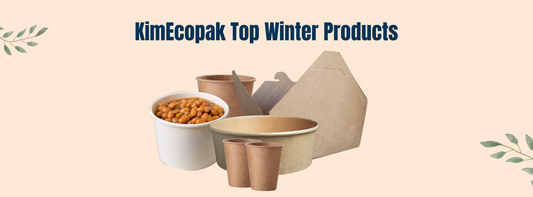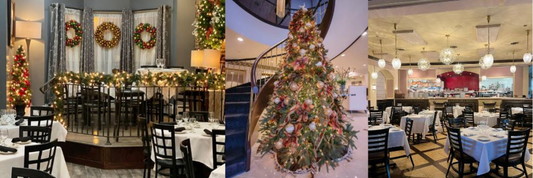The restaurant industry offers a diverse array of dining experiences, each catering to different tastes, preferences, and dining occasions. From quick-service eateries to luxurious fine dining establishments, the types of restaurants vary widely. This article explores the various types of restaurants, their unique characteristics, and the reasons to consider opening each type.
What Is a Full-Service Restaurant?
A full-service restaurant provides table service, where guests are seated, take orders, and serve food and beverages by waitstaff. These restaurants typically offer a wide-ranging menu, an extensive beverage list, and a focus on customer service and dining experience.
12 Different Types of Restaurants
Fast Food Restaurants (QSR)
Fast Food Restaurants, also known as Quick-Service Restaurants (QSR), focus on quick service (usually taking only minutes) and convenient, affordable meals. They often feature counter service, drive-thrus, and limited seating.
Characteristics Of Fast Food Restaurants:
- Service Style: Counter service and/or drive-thru service
- Menu: Limited menu options like burgers, sandwiches, fries, and soft drinks
- Interior: Casual, functional dining spaces that are easy to clean
- Examples: Burger King, McDonald's, Taco Bell
- Price: $
Why Open a Fast Food Restaurant?
- High Demand: Consistent demand for quick, affordable meals.
- Efficient Operations: Streamlined processes and high turnover rates.
- Franchise Opportunities: Many established franchises offer support and brand recognition.

Casual Restaurants
Casual Restaurants provide a relaxed dining atmosphere with moderate pricing and varied menu options. These establishments often cater to families and groups, offering a comfortable and informal setting.
Characteristics Of Casual Restaurants:
- Service Style: Full service
- Menu: Classic menu items, comfort foods, large portions
- Interior: Neutral decor, comfortable booth seating
- Examples: Olive Garden, Red Lobster, Applebee's
- Price: $$
Why Open a Casual Restaurant?
- Broad Appeal: Attracts a wide range of customers.
- Flexibility: Diverse menu options and themes.
- Loyal Customer Base: Potential for repeat business from locals.
Fast Casual Restaurants
Fast casual restaurants combine the convenience of fast food with higher-quality ingredients and a more inviting dining environment. They often offer customizable menu options and focus on health-conscious and fresh food.
Characteristics Of Fast Casual Restaurants:
Why Open a Fast Casual Restaurant?
- Growing Market: Increasing demand for healthier, high-quality fast food.
- Higher Profit Margins: Willingness to pay more for better quality.
- Unique Concepts: Opportunity to create a distinctive brand.

Contemporary Casual Restaurant
Contemporary Casual Restaurants focus on trendy, modern dining experiences with innovative menus and stylish decor. These establishments often appeal to younger, urban diners looking for unique and Instagram-worthy dining experiences.
Characteristics Of Contemporary Casual Restaurants:
- Service Style: Table service, mobile order-and-pay, QR code menus
- Menu: Trendy cuisine, farm-to-table, global flavors, diet-inclusive options
- Interior: Thoughtful, vibrant decor that stands out in a photo
- Examples: Seasons 52, Earls Kitchen + Bar, Iron Hill Brewery
- Price: $$-$$$
Why Open a Contemporary Casual Restaurant?
- Trendsetting: Stay ahead of dining trends and attract a fashionable crowd.
- Creative Freedom: Experiment with new culinary ideas and presentations.
- Strong Social Media Presence: Leverage visual appeal for marketing.
Fine Dining Restaurant
Fine Dining Restaurants offers an upscale dining experience with gourmet cuisine, extensive wine lists, and exceptional service. These establishments often feature elegant decor and a formal atmosphere.
Characteristics Of Fine Dining Restaurants:
- Service Style: Full table service with strict etiquette rules
- Menu: Pricey, exclusive items and prix fixe menus
- Interior: Elegant, sophisticated decor
- Examples: Ruth’s Chris Steak House, The Melting Pot, The Capital Grille
- Price: $$$-$$$$
Why Open a Fine Dining Restaurant?
- Prestige: Establish a high-end, reputable brand.
- High-Profit Potential: Premium pricing for top-quality food and service.
- Culinary Excellence: Showcase culinary skills and creativity.

Cafe or Coffee Shop
Cafes or Coffee Shops serve coffee, tea, light snacks, and pastries. They offer a relaxed environment for socializing, working, or enjoying a quick bite.
Characteristics Of Coffee Shop:
- Service Style: Counter service and/or drive-thru service
- Menu: Coffee, tea, and small menu items
- Interior: Small seating areas, trendy decor, relaxed atmosphere
- Examples: Starbucks, Tim Hortons, Dunkin'
- Price: $-$$
Why Open a Coffee Shop?
- Community Hub: Create a gathering place for locals.
- Regular Customers: Attract repeat business from daily visitors.
- Flexible Menu: Offer a variety of beverages and snacks.
Specialty Drink Shops
Specialty Drink Shops focuses on unique beverages such as smoothies, bubble tea, or craft cocktails. These establishments often have a niche market and loyal customer base.
Characteristics of Specialty Drink Shops:
- Service Style: Counter service and/or drive-thru service
- Menu: Coffee, tea, and small menu items
- Interior: Small seating areas, trendy decor, relaxed atmosphere
- Examples: Tropical Smoothie, Jamba Juice, Kung Fu Tea
- Price: $-$$
Why Open a Specialty Drink Shop?
- Niche Market: Cater to specific tastes and preferences.
- High Margins: Potential for high-profit margins on specialty drinks.
- Brand Differentiation: Stand out with unique offerings.
Buffet Restaurants
Buffet Restaurants offer a variety of dishes displayed in a self-service format, allowing customers to sample different items and eat as much as they like for a fixed price.
Characteristics of Buffet Restaurants:
- Service Style: Limited table service, self-service
- Menu: Buffet stations with comfort foods
- Interior: Large dining rooms, group seating
- Examples: Golden Corral, Old Country Buffet, Shady Maple Smorgasbord
- Price: $$
Why Open a Buffet Restaurant?
- High Volume: Serve a large number of customers quickly.
- Menu Variety: Appeal to diverse tastes and dietary preferences.
- Cost Control: Manage food costs effectively with bulk purchasing.

Food Trucks
Food Trucks are mobile eateries that serve food and beverages from a truck or trailer. They can be found at events, festivals, or various locations around town.
Characteristics of Food Trucks:
- Service Style: Window service
- Menu: Small menus with a theme
- Interior: Small kitchen spaces with select pieces of equipment
- Examples: Grilly Cheese, Fired Up Grill, Nacho Average BBQ
- Price: $-$$
Why Open a Food Truck?
- Low Startup Costs: Lower initial investment compared to a traditional restaurant.
- Flexibility: Move to different locations based on demand.
- Unique Offerings: Experiment with different cuisines and menus.
Concession Stands
Concession Stands are typically found at sports venues, fairs, and events, offering quick snacks and beverages to attendees.
Characteristics of Concession Stands:
- Service Style: Counter service
- Menu: Usually one type of food item, like cotton candy, popcorn, or hotdogs
- Interior: No interior
- Examples: Thrasher’s French Fries, Dippin' Dots, Nathan’s Famous
- Price: $
Why Open a Concession Stand?
- Event-Based Sales: Capitalize on high-traffic events.
- Simple Menu: Focus on popular, easy-to-prepare items.
- Lower Overheads: Minimal operational costs.

Pop-Up Restaurants
Pop-Up Restaurants are temporary dining establishments that are set up in various locations for a short period. They often feature unique themes and limited-time menus.
Characteristics of Pop-Up Restaurants:
- Service Style: May include counter service, food stand or food truck service, or full table service
- Menu: A small menu with select options
- Interior: Temporary seating spaces and decor that can be removed easily
- Price: $$-$$$
Why Open a Pop-Up Restaurant?
- Low Commitment: Short-term investment and operation.
- Market Testing: Test new concepts and menus before a full-scale launch.
- Create Buzz: Generate excitement and media attention.
Ghost Restaurants
Ghost Restaurants (also known as ghost kitchens or virtual brands) operate without a traditional dining space, focusing exclusively on delivery and takeout services.
Characteristics of Ghost Restaurants:
- Service Style: Online and mobile ordering only
- Menu: Menu items that work well with delivery
- Interior: Kitchens only
- Examples: Wow Bao, Guy Fieri's Flavortown Kitchen
- Price: $$
Why Open a Ghost Restaurant?
- Cost Savings: No need for a physical dining space.
- Adaptability: Quickly adjust to market trends and customer preferences.
- Focus on Delivery: Capitalize on the growing demand for food delivery services.
Conclusion
The restaurant industry offers a wide variety of dining experiences, each with its own unique appeal and business model. Whether you're looking to open a fast-food joint, a fine dining establishment, or a trendy coffee shop, understanding the different types of restaurants and their benefits can help you make an informed decision. By carefully considering your target market, location, and business goals, you can choose the restaurant type that best suits your vision and sets you up for success in the competitive food service industry.







